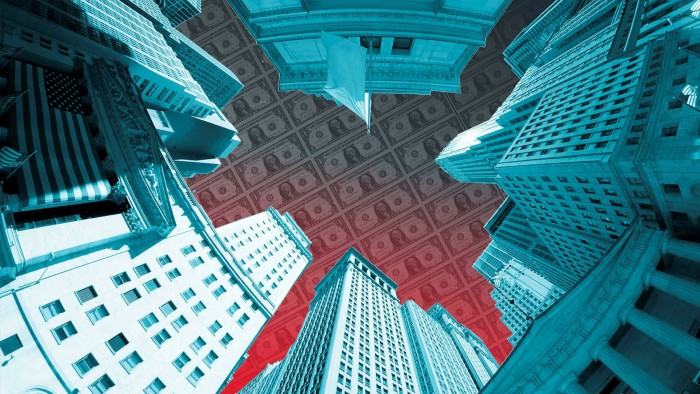Why we get inflation wrong


Roula Khalaf, Editor of the FT, selects her favourite stories in this weekly newsletter.
This article is an on-site version of our Unhedged newsletter. Sign up here to get the newsletter sent straight to your inbox every weekday
Good morning. For some reason writing about inflation makes me feel slightly guilty, as if I am forcing my readers to eat spinach, or conjugate irregular verbs. But it is worth remembering why the topic is so important. In the transitory-vs-sticky debate, the market has put all its chips on transitory. This is most visible in bond yields, but it is wired into equity valuations too. The chances of multiple years of inflation much over (say) 3 per cent seem slim to me, but if that’s how the dice come up, we’re going to have some wild times. So bear with me, and read on. Email me: robert.armstrong@ft.com
Do we have 1950s-style inflation?
I often describe inflation as the thing that everyone is always wrong about. In my adult life, there has only been one thing to say about it that did not come back and bite you in the ass: “It’s going lower, and staying lower, no matter what and forever.” Anyone who said anything other than that has ended up looking dumb.
Of course the inflation neurotics may be vindicated in the end. But it is worth thinking about why so many have been so wrong for so long. In this context, this blog post from Gabriel Mathy, Skanda Amarnath and Alex Williams is interesting. It argues that when we think about inflation, we should think more about the 1950s and less about the 1970s. Here is their statement of the standard narrative about the 1970s:
“The unemployment rate got too low in the late 1960s (3.4%), which set off inflation through a Phillips curve dynamic. This inflation then caused workers and price-setters to reset their inflation expectations higher, and these higher expectations cashed out into a higher rate of inflation over the following decade. This tug of war then went on until the Volcker Fed hiked rates far enough to cause a major recession, which reset everyone’s inflation expectations.”
MA&W are right: talk to 100 people about inflation, and 95 of them will talk about it just like this. Most of us have only three tools in the box. One: a Phillips-curvey idea that there is some level of unemployment below which any effort at economic stimulus must result in inflation. Two: the idea that inflation expectations are self-fulfilling prophecies because price-setters try to get ahead of them. Three: saying “inflation is always and everywhere a monetary phenomenon” without reflecting too carefully about what exactly that might mean.
And when these are the only inflation concepts you have, the conclusion you will come to is the Federal Reserve has better be vigilant.
But the 1950s, MA&W point out, saw very low unemployment at the beginning of the decade, and a subsequent “burst of inflation”, and no interest rate shock tactics were used to bring it down.

So, what was the difference? In the 1950s inflation rose quickly as America moved towards war in Korea, but:
“Once it became clear that the Korean war would not require the same scale of economic overhaul or active management as world war two, inflation expectations quickly normalised . . . The account of ‘inflation expectations’ that this experience implies is one centred around world events, rather than past realised values of inflation. This version adds a degree of empirical realism, but sacrifices the idea that inflation — once started — will create a self-sustaining upward spiral. Instead, inflation rises and falls as expectations about the future change.”
In the 1970s, MA&W think, the problem was not a spiral of expected and realised inflation, but a retooling of the economy that led to persistent capacity bottlenecks and labour markets that couldn’t clear. The difference with the 1950s was not about expectations; the underlying economic changes were simply much greater.
The punchline, of course, is that today the economic changes we see are not as dramatic or as permanent as those of the 1970s, and even if they do last a few years, inflation expectations need not spook us, and we don’t need to worry about a policy mistake.
MA&W want a super-tight labour market (their blog is called “Employ America”). So like everyone else, they have a policy agenda. I’m not advocating their theory. I don’t know enough economics to assess it properly. But I am convinced that their starting point is correct: any serious thinking about inflation has to start by accepting that the most longstanding and widely accepted view of it has been proven wrong.
Aswath Damodaran on ESG
When I say that environmental, social and governance investing does the world harm, people assume I’m exaggerating for effect; that what I write is clickbait. Nope. I’m sure the ESG investing industrial complex is well intentioned, but I am equally confident that the world would be a better place without it. To use Tariq Fancy’s analogy, the industry is selling wheatgrass juice as a cure for cancer: it won’t help; it reduces the chance the patient will seek the right treatment; and it’s not cheap.
It’s a lonely view to hold, so I was gratified to discover that Aswath Damodaran, the New York University professor and much-cited valuation expert, holds the same view. He makes some of the arguments that Fancy and I have made, but he makes many of them more clearly and rigorously than either of us, and adds some new wrinkles.
I should note that he and I disagree on one point. He thinks the fact that what constitutes good corporate behaviour is always going to be contested, so that the lack of correlation among ESG rating schemes cannot be resolved. I think consensus on key issues (climate change, supply chain transparency, shareholder rights, executive compensation) is possible. That’s why the ESG industry loves to talk about this issue. It is solvable, unlike ESG’s other contradictions and conflicts.
Damodaran makes two key points with particular elegance. One is that, in equilibrium, the insistence that ESG portfolios can outperform non-ESG portfolios makes no sense:
“The notion that adding an ESG constraint to investing increases expected returns is counter intuitive. After all, a constrained optimum can, at best, match an unconstrained one, and most of the time, the constraint will create a cost.”
That is the best expression I’ve read of the plain truth that ESG funds do-well-by-doing-good marketing is just bullshit.
Next, he fleshes out the important point (also made here) that ESG attributes can only drive outperformance in transition periods, where investors’ preferences are changing. Thereafter, cost of capital differentials must mean underperformance:
“During the adjustment period the highly rated ESG stocks will outperform the low ESG stocks, as markets slowly incorporate ESG effects, but that is a one-time adjustment. Once prices reach equilibrium, highly rated ESG stocks will have greater values, but investors will have to be satisfied with lower expected returns.”
Most importantly, though, he poses a crucial question:
“If ESG is a flawed concept, perhaps fatally so, and if the flaws are visible for everyone to see, how do we explain the immense push [for it] in both corporate and investment settings?”
The answer is that ESG is a deep trough at which investment fund managers, accountants and consultants can feed. Damodaran’s chart of this is a delight:

One good read
That thing that keeps happening to big companies in China? It happened again.
Comments